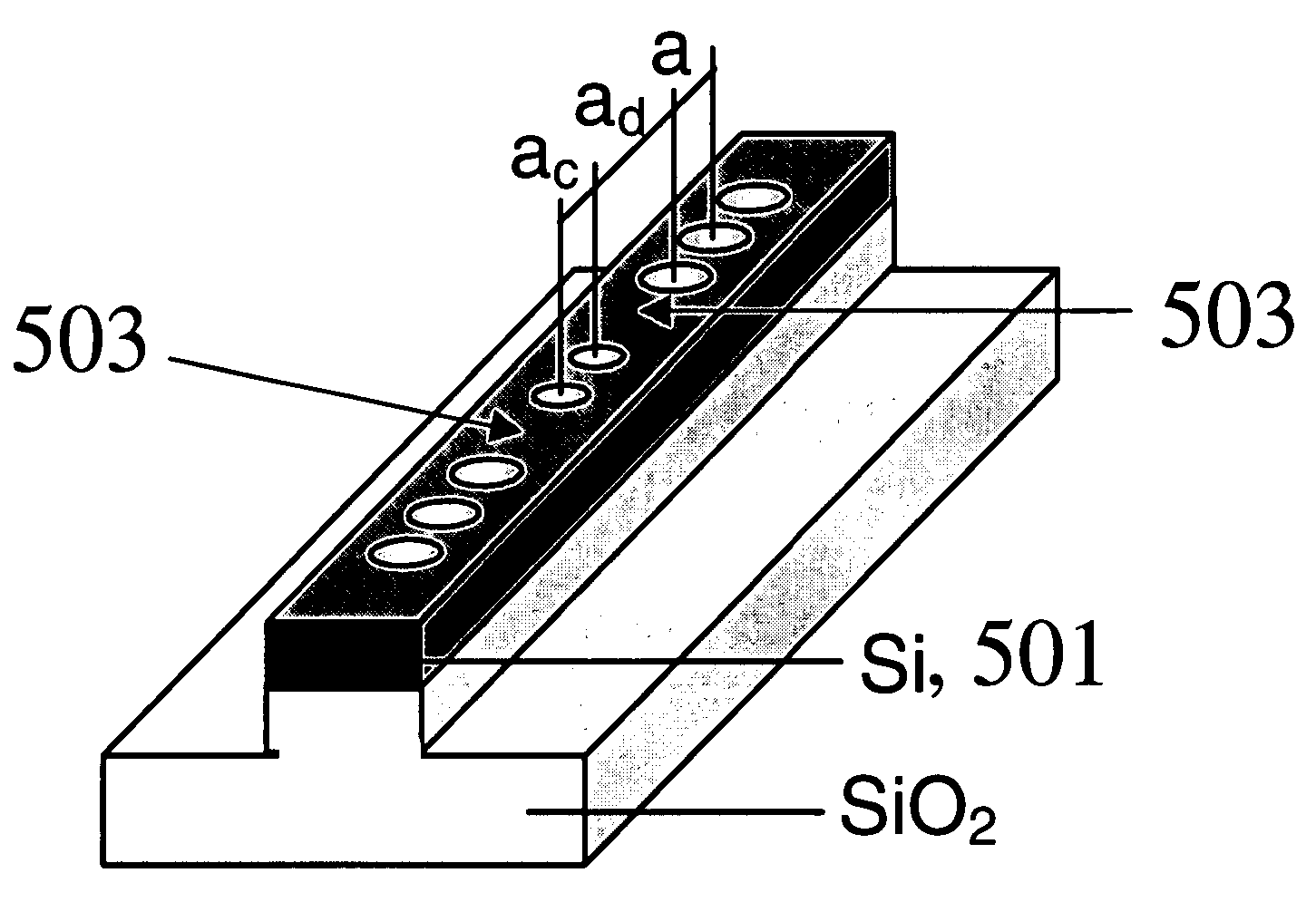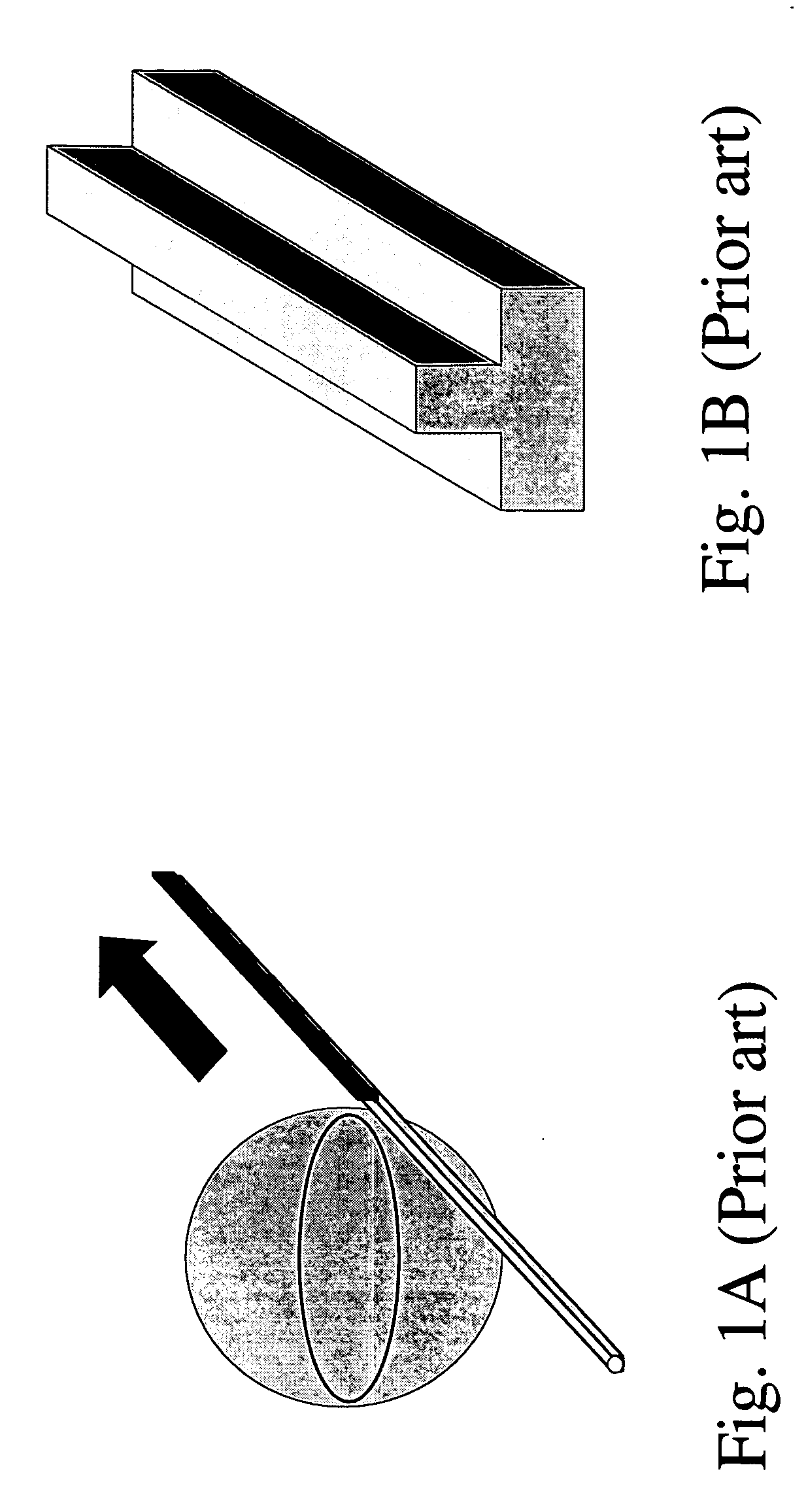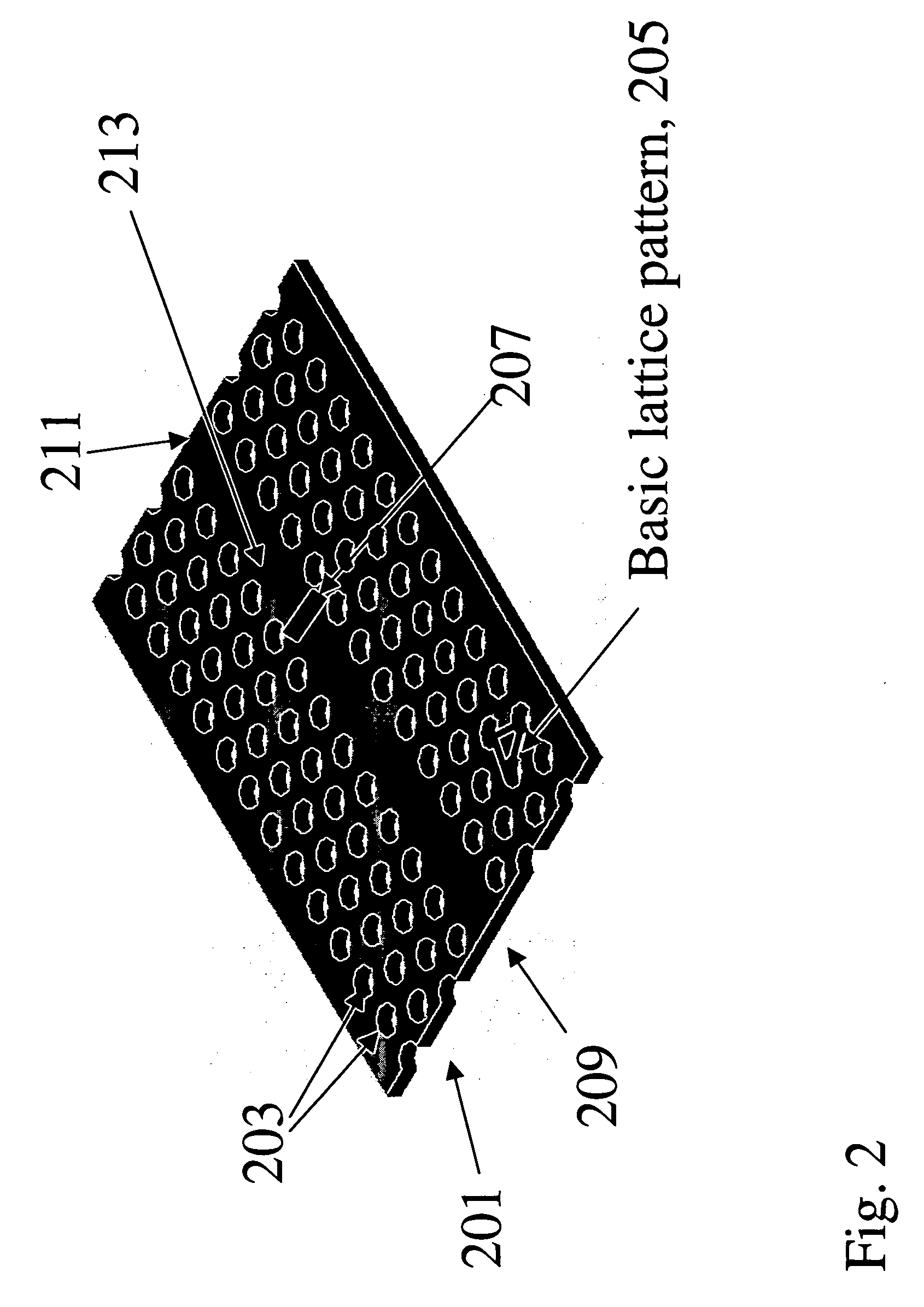Enhanced raman amplification and lasing in silicon-based photonic crystals
a technology of photonic crystals and raman, applied in the field of raman microlasers, can solve problems such as cavities in air holes with defects
- Summary
- Abstract
- Description
- Claims
- Application Information
AI Technical Summary
Benefits of technology
Problems solved by technology
Method used
Image
Examples
Embodiment Construction
[0033] SRS is a linear inelastic two-photon process, where an incident photon interacts with an excited state of the material. In various embodiments of the present invention, which include the use of photonic crystals made of silicon, the excited state of the material refers to the longitudinal optical (LO) and transversal optical (TO) phonons of crystal silicon. In such embodiments, the strongest Stokes peak arises from single first-order Raman-phonon (threefold degenerate) at the Brillouin zone center of silicon. A microscopic description that depicts the change in the average number of photons ns at the Stokes wavelength ωs with respect to the longitudinal distance z is: ⅆnsⅆz=(GR-αs) ns,GR=(ρi-ρf)1μ1 / 2nsⅆWfiⅆωs,(1)
where GR is the Raman gain, αs an attenuation coefficient, μ the permeability, ⅆWfiⅆωs
the transition rate, and ρi and ρf the initial and final state populations, respectively. For ns and np (the average number of photons at ωp) significantly greater than 1, ...
PUM
 Login to View More
Login to View More Abstract
Description
Claims
Application Information
 Login to View More
Login to View More - R&D
- Intellectual Property
- Life Sciences
- Materials
- Tech Scout
- Unparalleled Data Quality
- Higher Quality Content
- 60% Fewer Hallucinations
Browse by: Latest US Patents, China's latest patents, Technical Efficacy Thesaurus, Application Domain, Technology Topic, Popular Technical Reports.
© 2025 PatSnap. All rights reserved.Legal|Privacy policy|Modern Slavery Act Transparency Statement|Sitemap|About US| Contact US: help@patsnap.com



